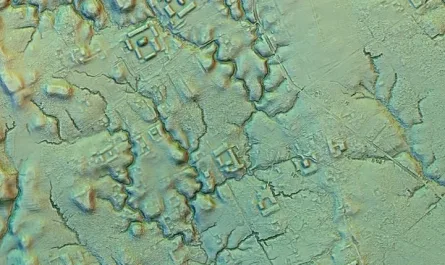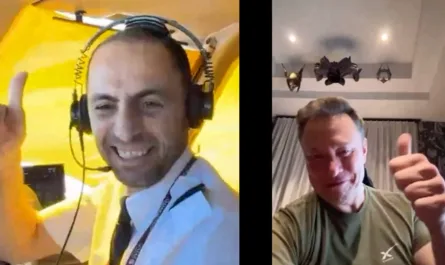Twelve alien spacecrafts descend upon Earth, spread across the globe in a random configuration. The American military recruits language expert Dr. Louise Banks and physicist Ian Donnelly to communicate with the aliens in order to discover if their intentions are hostile. The pair slowly decipher the extraterrestrials’ complex language, in which visual symbols are used in place of traditional phonetics. As Louise delves deeper into the alien dialect, she begins to experience a form of transcendence that not only holds the key to the alien’s agenda, but also a contains a power that could either redeem humanity or utterly destroy it.
VIDEO:
Amy Adams gives the performance of her career as Louise. This is a heavy film. packed with imagery and subtext that could have overshadowed a lackluster performance and Adams’s immense capabilities shine not only in her delivery, but in her total commitment. She portrays Louise as an outsider, a master in communication and yet a novice in human connection. As the narrative progresses, the viewer can’t help but identify with her creative weariness, a scientist who believes there is always a non aggressive option, even in the face of annihilation. She’s supported by Jeremy Renner, who does an excellent job as her academic opposite. It’s one of the many things about Arrival that is so telling. When the scientists disagree, they are respectful and use their contrasting viewpoints to find a consensus, offsetting Forest Whitaker’s army officer, whose focus is on the threat. He takes what could be an opposing force and portrays his character as a concerned collaborator, willing to give science a chance, but always remaining pragmatic.
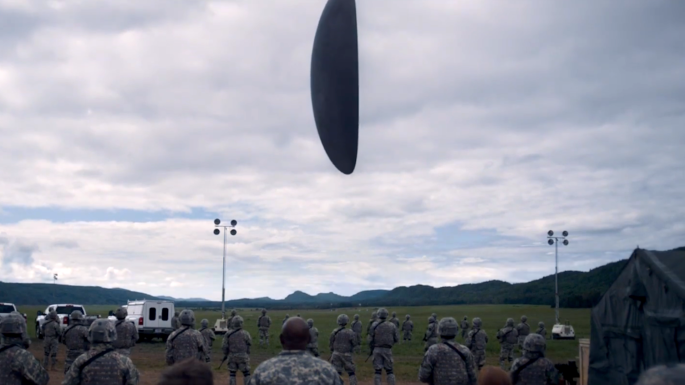
Bradford Young’s cinematography is pure visual splendor, showcasing a remarkable understanding of a larger than life undertaking. The shot of the initial approach to the vessel is breath taking, capturing fog as it tumbles across a vista, gorgeously symbolizing the mutual confusion of first contact. There is a transitional shot involving Louise’s memory, offset by orange emergency lighting that has to be seen to be believed. The shots outside the craft are filled with deep blues and thick shadows, mimicking the fear of the human world. The interior of the ship is framed with mind bending angles as the team ventures inside and then saturated with ghostly whites and institutional blacks, using color to evoke the strangeness of the visitors.
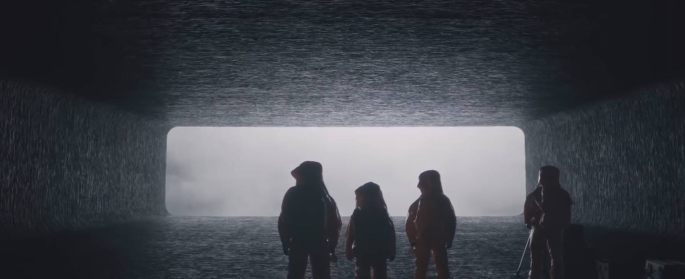
Isabelle Guay’s art direction portrays the otherworldly vessel without complicated gadgetry and ominous corridors, allowing the camera to focus on the interactions. It is this simplistic and respectful approach that makes it work. Once the parley begins, the attention is on the participants, with Sylvain Bellemare’s sound design stealing the focus. Repetition and subtext are key with alien sounds vibrating through the speakers, echoing within the viewer’s mind as they try to piece together the mystery. Johann Johannson’s score is an intimate companion, being a force unto its self when the action requires and then delicately receding, like the memory of a first kiss Ryal Cosgrave’s sublime visual effects present the alien dialect with beautiful inky characters, while his vision of their physical form is one of the most unique creature designs ever attempted.
Eric Heisserer’s script, based on the award winning short story by Ted Chiang, will capture gold this awards season. This is an intoxicating, patient film that respectfully holds the viewer’s hand while also giving them room to explore their own conclusions. Using the base concepts of communication and alienation as a means to combat inter species conflict, Arrival teaches, but never lectures. It uses the narrative to present the universal concepts of acceptance and tolerance through a scientific filter but never goes beyond the essentials, remaining accessible to the audience if they are patient with the slow release story design. There are a few elements related to natural human paranoia that are used to add tension that could have been excised, but their presence only enhances the feeling of desperation that pervades throughout the final act. While astute viewers will see the conclusion coming long before it happens, Arrival is an experience where the journey of discovery is paramount over the summation.
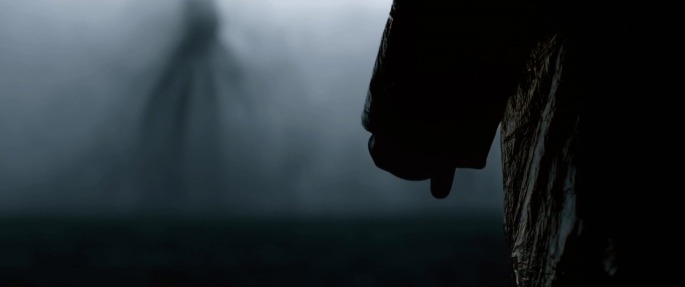
Debuting in theaters today, Denis Villeneuve’s Arrival is one of the best films of 2016. Continuing his amazing streak of thought provoking and challenging movies, Villeneuve proves that he is more than capable of delivering greatness. His control over the potent elements is evident in every frame, with the final product being one of the most thought provoking and genuinely heartfelt films in recent memory.




